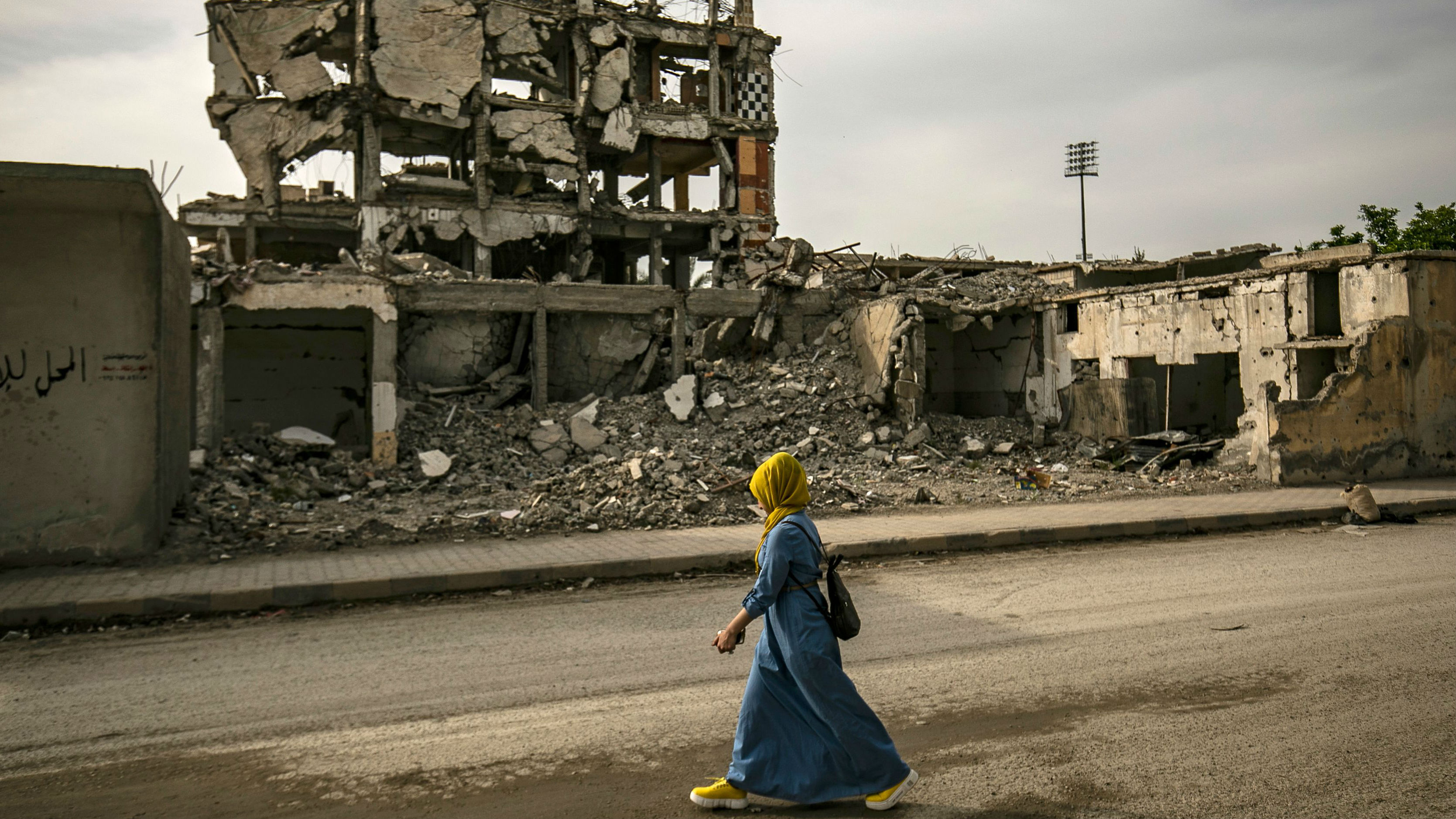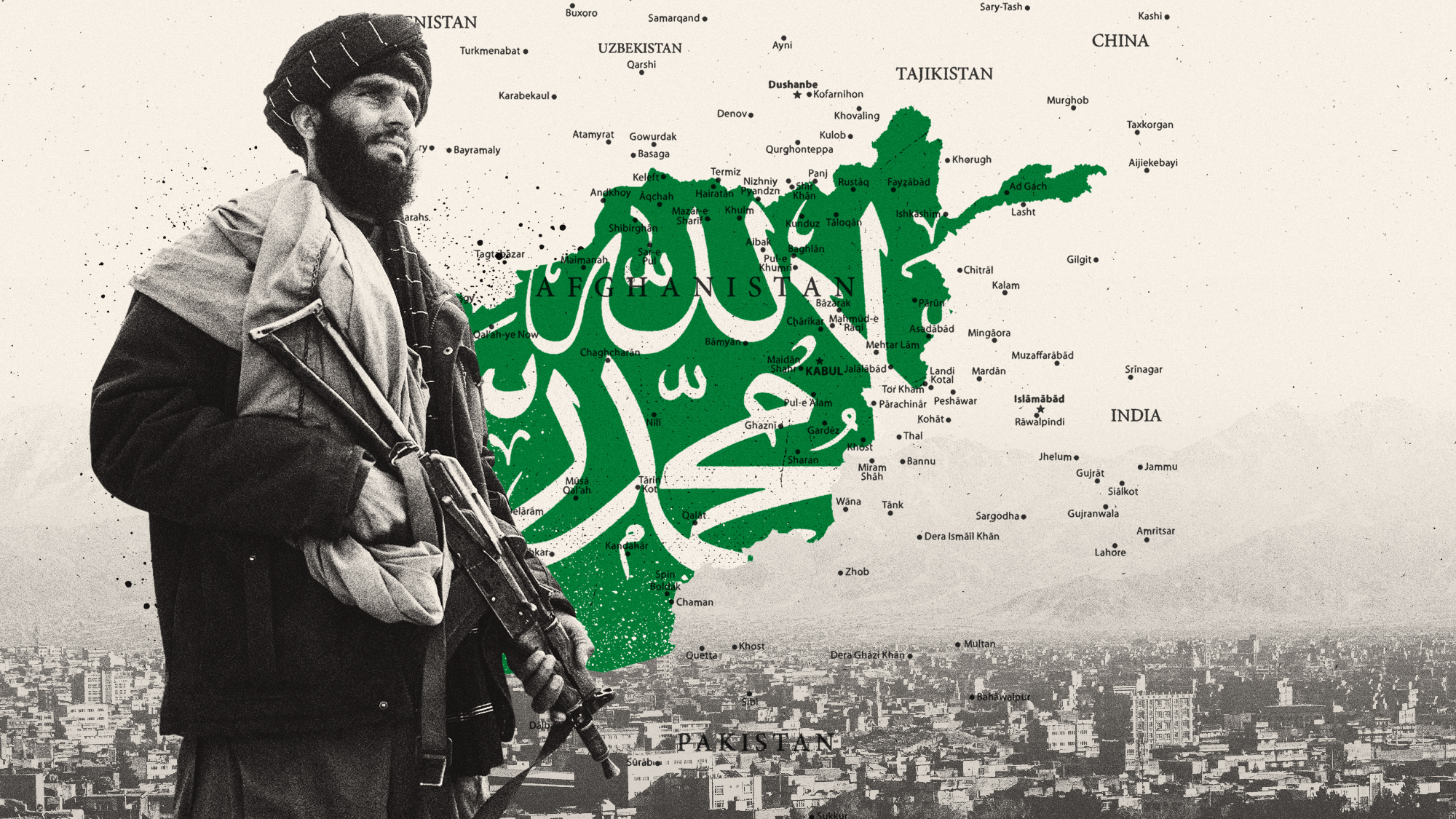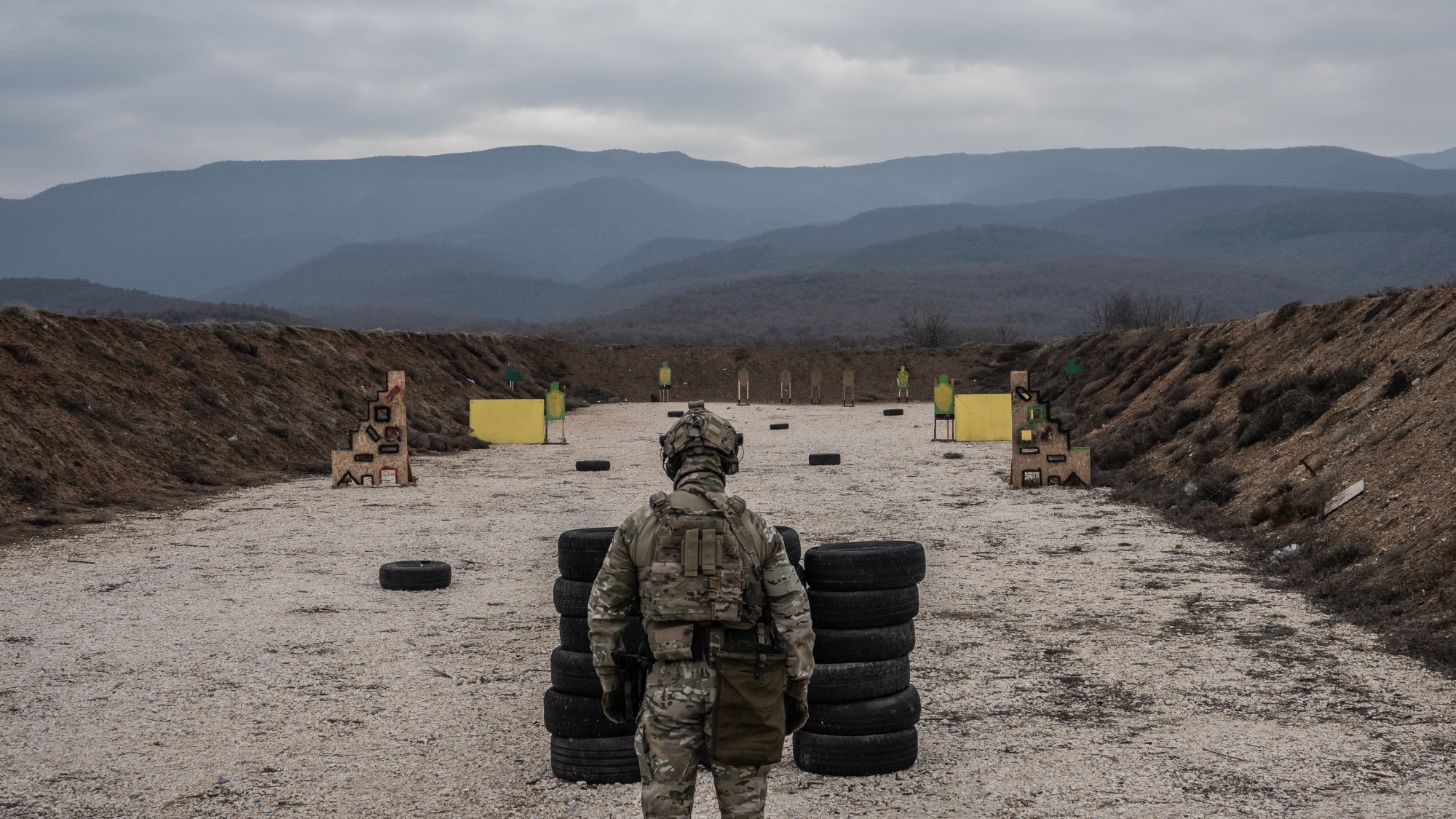Where are Isis fighters now?
US withdrawal from Syrian-Turkish border fuels fears of resurgence of the jihadist group

Donald Trump’s decision to withdraw US troops from the Syria-Turkey border has sparked fears that Islamic State may once again tighten its grip on the region.
At its peak, five years ago, the militant group controlled 34,000 square miles of territory stretching from western Syria to eastern Iraq, before being pushed back to small pockets in the north of Syria.
Kurdish fighters were key US allies in defeating Isis in the region, but Turkey views the biggest Kurdish militia in the alliance - the YPG - as a terrorist group. The US pullout is seen as paving a way for a Turkish offensive against these Kurdish forces, reports the BBC.
The Week
Escape your echo chamber. Get the facts behind the news, plus analysis from multiple perspectives.

Sign up for The Week's Free Newsletters
From our morning news briefing to a weekly Good News Newsletter, get the best of The Week delivered directly to your inbox.
From our morning news briefing to a weekly Good News Newsletter, get the best of The Week delivered directly to your inbox.
Today, Turkish warplanes dropped bombs on the area and ground forces gathered on the border. President Recep Tayyip Erdogan has said the aim is to create a “safe zone” that will house Syrian refugees, with no Kurdish militia.
“America’s allies in the fight against Isis have again been undermined - and they should begin to grapple with the fact that while Trump has promised to pull America from its forever wars, the local soldiers who have fought this version of it will sooner or later be forced to do it alone,” says The Atlantic.
“Whether they can withstand an Isis resurgence on their own - amid the same sort of chaotic conditions in Iraq and Syria that saw Isis rise up in 2014 - is another question.”
So where are these Isis fighters now?
A free daily email with the biggest news stories of the day – and the best features from TheWeek.com
The US-led Global Coalition to Defeat Isis believes the vast majority of the jihadist militants are dead or in custody.
According to The Times, a total of at least 12,000 suspected Isis members are being held in seven prisons in northeast Syria. Most of the prisoners are Syrian or Iraqi, but at least 4,000 are said to be foreigners, from a total of more than 50 countries worldwide.
The exact locations of the jails are not published for security reasons, but some are believed to be close to the Turkish border.
In addition, three “closed” refugee camps house more than 100,000 women and children who fled Isis-controlled areas. “Many of the women are still radicalised and may have committed atrocities,” says the newspaper.
The prisons are guarded by the Kurdish-dominated Syrian Democratic Forces (SDF), but the coalition group has warned that it cannot continue to hold the prisoners and their families in the long-term.
Officials have previously said there is a high risk of a breakout, and the SDF has now declared that guarding the prisoners must be a “second priority” to defending against the expected Turkish offensive.
The White House this week said that Turkey will be “responsible for all Isis fighters in the area captured over the past two years” - but Ankara’s former foreign minister Yasar Yakis has predicted that this task will prove to be a “nightmare”.
“There are already dormant Isis cells in Turkey. They may wake up and wreak havoc in the country,” he warned.
In August, The New York Times reported that thousands of Isis fighters were still roaming free in Syria and Iraq, supported by funds of as much as $400m hidden somewhere in the two countries or smuggled to a neighbouring state.
“Although there is little concern that the Islamic State will reclaim its former physical territory, a caliphate that was once the size of Britain and controlled the lives of up to 12 million people, the terrorist group has still mobilised as many as 18,000 remaining fighters in Iraq and Syria,” according to the newspaper.
“These sleeper cells and strike teams have carried out sniper attacks, ambushes, kidnappings and assassinations against security forces and community leaders.”
Some other fighters have tried to return to their home countries.
A 2018 study by the International Centre for the Study of Radicalisation (ICSR) at King’s College London concluded that more than 41,000 people from 80 countries were affiliated with Isis. This figure included 850 people from the UK. The researchers found that, by June last year, around 7,300 had returned home, including 425 to the UK, the BBC reports.
Others, such as former Londoner Shamima Begum, have been stripped of their national citizenship and are unable to leave Syria.
-
 ‘Jumping genes': How polar bears are rewiring their DNA to survive the warming Arctic
‘Jumping genes': How polar bears are rewiring their DNA to survive the warming ArcticUnder the radar The species is adapting to warmer temperatures
-
 January’s books feature a revisioned classic, a homeschooler's memoir and a provocative thriller dramedy
January’s books feature a revisioned classic, a homeschooler's memoir and a provocative thriller dramedyThe Week Recommends This month’s new releases include ‘Call Me Ishmaelle’ by Xiaolu Guo, ‘Homeschooled: A Memoir’ by Stefan Merrill Block, ‘Anatomy of an Alibi’ by Ashley Elston and ‘Half His Age’ by Jennette McCurdy
-
 Venezuela’s Trump-shaped power vacuum
Venezuela’s Trump-shaped power vacuumIN THE SPOTLIGHT The American abduction of Venezuelan President Nicolás Maduro has thrust South America’s biggest oil-producing state into uncharted geopolitical waters
-
 What will happen in 2026? Predictions and events
What will happen in 2026? Predictions and eventsIn Depth The new year could bring peace in Ukraine or war in Venezuela, as Donald Trump prepares to host a highly politicised World Cup and Nasa returns to the Moon
-
 Shots fired in the US-EU war over digital censorship
Shots fired in the US-EU war over digital censorshipIN THE SPOTLIGHT The Trump administration risks opening a dangerous new front in the battle of real-world consequences for online action
-
 Hong Kong court convicts democracy advocate Lai
Hong Kong court convicts democracy advocate LaiSpeed Read Former Hong Kong media mogul Jimmy Lai was convicted in a landmark national security trial
-
 How Bulgaria’s government fell amid mass protests
How Bulgaria’s government fell amid mass protestsThe Explainer The country’s prime minister resigned as part of the fallout
-
 Normalising relations with the Taliban in Afghanistan
Normalising relations with the Taliban in AfghanistanThe Explainer The regime is coming in from the diplomatic cold, as countries lose hope of armed opposition and seek cooperation on counterterrorism, counter-narcotics and deportation of immigrants
-
 Pakistan: Trump’s ‘favourite field marshal’ takes charge
Pakistan: Trump’s ‘favourite field marshal’ takes chargeIn the Spotlight Asim Munir’s control over all three branches of Pakistan’s military gives him ‘sweeping powers’ – and almost unlimited freedom to use them
-
 Is Europe finally taking the war to Russia?
Is Europe finally taking the war to Russia?Today's Big Question As Moscow’s drone buzzes and cyberattacks increase, European leaders are taking a more openly aggressive stance
-
 Pushing for peace: is Trump appeasing Moscow?
Pushing for peace: is Trump appeasing Moscow?In Depth European leaders succeeded in bringing themselves in from the cold and softening Moscow’s terms, but Kyiv still faces an unenviable choice